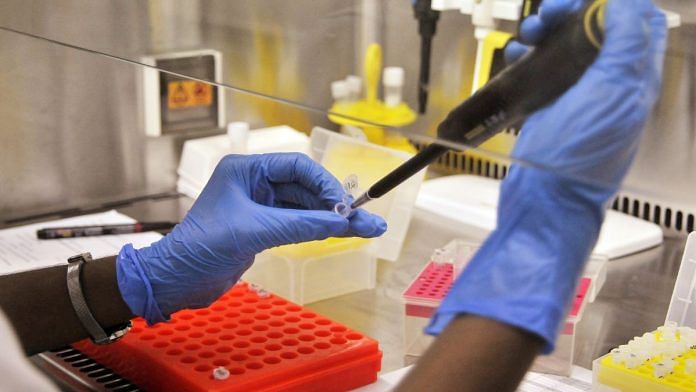
Thank you dear subscribers, we are overwhelmed with your response.
Your Turn is a unique section from ThePrint featuring points of view from its subscribers. If you are a subscriber, have a point of view, please send it to us. If not, do subscribe here: https://theprint.in/subscribe/
‘Rare’ genetic diseases: A collective inheritance we can ill-afford to ignore
Variety is the essence of living systems. None of us are clones of one another. Our DNA spontaneously accumulates small, subtle changes over a period of time. Many of these variations are benign or useful and are Nature’s way to optimize our survival, but a few could disturb normal body functions and result in disease. Arising from changes in our DNA, these diseases are passed on to the next generation. Thus, genetic diseases cannot be wished away. Neither can they be ‘eradicated’ like smallpox. Nor are they partial to any class, caste, or religion.
Why is it then that these diseases are, at best, a blip on the radar screen of our healthcare system? For one, any mention of genetic diseases is accompanied by the epithet ‘rare’, whereas it is estimated that genetic diseases affect 7 – 9 crore people in India, which could be about 50 times the number of cancer patients. They seem rare because there are as many as 5000 known genetic diseases, each with its own symptoms and outcomes; thus, patients of individual genetic diseases could number from tens (ultra-rare) to tens of thousands. But an even more important reason for the state of neglect of genetic diseases is the fact that, till a few decades ago, we simply did not have the technologies to correctly diagnose these diseases, and find rapid treatments.
Fortunately, this is no longer the case and the pace with which global research is advancing in this area is breath-taking. And deservedly so. More than half of genetic diseases affect children who may not live to see their fifth birthday. When survival is longer, the quality of life is severely compromised due to progressive disability and social exclusion. Thus far, the diagnosis was mainly based on clinical findings which typically tend to overlap with a number of different diseases. Advances in DNA sequencing technologies (of which we got a glimpse during the covid-19 pandemic when we could rapidly detect the emergence of new viral variants) have made it possible to accurately diagnose genetic diseases, a great boon to clinicians and patients. More importantly, it is even possible to replace the defective gene or its messenger RNA (mRNA). The power of mRNA was most evident to us due to the covid-19 mRNA vaccines. Pre-covid, this technology was being developed to treat genetic diseases by supplying the normal mRNA which is deficient in the patients. Its success in covid-19 vaccination has further boosted confidence in its potential. Such DNA- or RNA-based technologies have the advantage that the same platform can be tweaked to design drugs for a very large number of genetic diseases. Hence, although the initial expenditure in generating such platforms may be substantial, they are bound to provide bountiful returns in the long term. This is the philosophy that is spurring the rapid growth of companies developing DNA-, RNA-, or cell-based therapies for genetic diseases in the most advanced countries.
In India, we have made impressive strides in DNA-based diagnosis such that more and more patients are getting an accurate diagnosis, and the awareness about these diseases is increasing amongst patients, clinicians and Government agencies. However, for patients and their families, diagnosis is only the first essential step, which is of little help in the absence of any treatment. This becomes all the more poignant when families learn of treatments available to patients abroad which are saving the lives of children but are priced at lakhs to crores of rupees per year. Patients’ families in India have formed advocacy groups and knocked at the doors of the Courts, which has culminated in the declaration of the National Rare Disease Policy 2021. While it is a highly welcome step in the right direction, it stands to benefit only a minuscule number of patients for whom the life-long treatment cost does not exceed Rs. 50 lakhs. The sustainable approach would be to invest generously in creating facilities for drug development in genetic diseases along with supportive regulatory mechanisms, which will have spin-offs in many other conditions like cancers, life-style disorders, infectious diseases, and even ageing. We have the highest calibre of scientists and clinicians, highly motivated patient advocacy groups that can help to mobilize patients, and pharma companies who, in principle, are up to the job. None of these groups working in isolation can succeed. The glue must be provided by the Government by adopting a comprehensive approach to advance this next generation of drugs in the country. As the covid-19 pandemic showed, we were better off because we could make our own vaccines and not depend on imports. Here too, we can, and should be atmanirbhar.
These pieces are being published as they have been received – they have not been edited/fact-checked by ThePrint.


COMMENTS